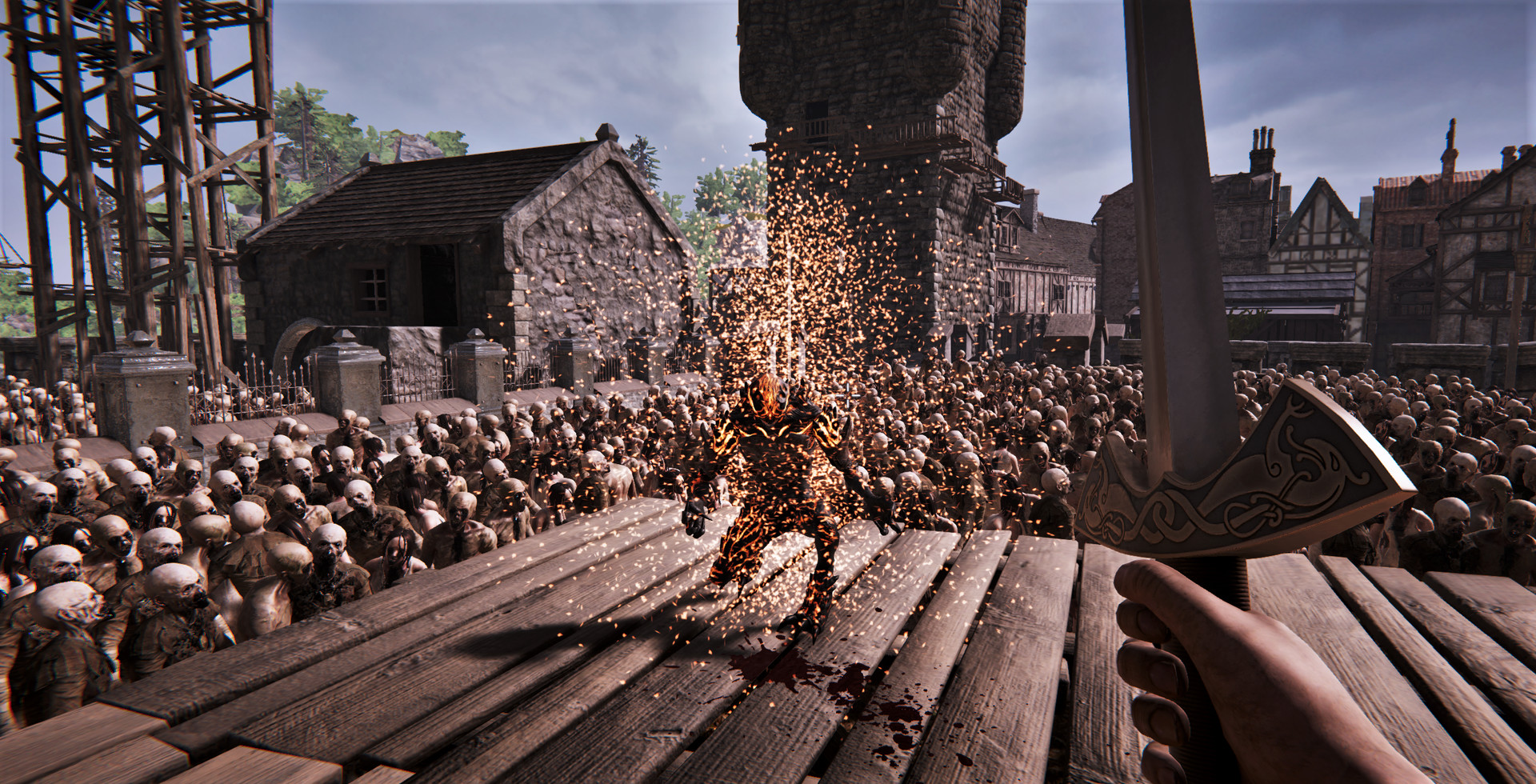
Beyond that we cannot comment on future pricing.” Will the game be priced differently during and after Early Access? We strongly feel the EA version has more than enough content to satisfy your zombie slaying needs!” Several kilometers of the world can be explored with many hours of content in both the main story quests and side quests. “The first EA version will release as beta 0.1. What is the current state of the Early Access version?
The black masses uebs update#
We hope that each content update will bring several hours more of intriguing content.” Level caps and new areas will be unlocked with each large content update. “We are constantly adding content and fixing bugs.
The black masses uebs full version#
How is the full version planned to differ from the Early Access version? If you wish to have an impact on this project, then early access is for you.”Īpproximately how long will this game be in Early Access? We have accomplished so much, but we are still far from completion. Over 2 1/2 years of work has gone into this title, from only 4 full time developers. These and other measurement techniques make it possible to study the physical processes in the immediate vicinity of a black hole, billion times heavier than the sun, which embodies the limits of physics.“The Black Masses is a massive world. Matter that is visible via its radio emission in the presented image, moves along these invisible magnetic field lines. The polarisation, for example, mimics the structure and strength of the underlying magnetic field that surrounds the black hole and shapes the jet. In addition to the light intensity, which has been imaged here, other properties of the radio light can also be extracted. New, even more sensitive radio receivers of the GMVA telescope should enable the astronomers to make further detailed measurements. But the limits of this high-resolution observation technique have not yet been reached. Anton Zensus, Director at the Max Planck Institute for Radio Astronomy, these successes show that the years of development and continuous expansion of the technology of these global radio telescope networks have paid off.

This donut-like image marked the black hole itself for the first time. It mainly shows matter in a comparatively narrow ring in the immediate vicinity of the black hole. The image of the nucleus of M87, which astronomers had succeeded in obtaining a few years earlier with a different telescope configuration, the Event Horizon Telescope at a wavelength of 1,3 millimetres, is characterised by an even stronger zoom factor. "The spectacular image of the jet and ring in M87 is an important milestone and crowns years of collaborative effort," says Eduardo Ros, a scientist at the Max Planck Institute for Radio Astronomy. They observed the galaxy's core back in April 2018 and took years to interpret the data and reconstruct the image. Only through the special arrangement of the telescopes and the choice of the wavelength of 3,5 millimetres were the scientists able to image the galaxy's central engine and how matter flows into the black hole and is accelerated outwards in a jet. To improve the imaging quality, the team also added the Atacama Large Millimetre/Submillimetre Array (Alma) and the Greenland Telescope. The central component of the network is the Global Millimetre VLBI Array (GMVA), which spans Europe and North and South America with more than a dozen individual telescopes. The shorter the wavelength, the finer the structures that can be imaged. The wavelength that the radio receivers are tuned into also define the image. The larger the network and the further apart the individual telescopes are, the smaller the structures that can be imaged. In order to resolve these structures, which are tiny when seen from Earth, the researchers use an array of many radio telescopes. At a distance of the galaxy of about 55 million light years, this corresponds to a few times the diameter of our solar system. Seen from Earth, this inner region appears only about as large as a concert spotlight on the Moon, corresponding to an angular diameter of 64 microarcseconds.

This allows an almost unobscured view onto the radio-bright matter streams that surround the central black hole, and that fuel the jet. The international research team obtained the image by observing the radio light at a wavelength of 3,5 millimetres.


 0 kommentar(er)
0 kommentar(er)
